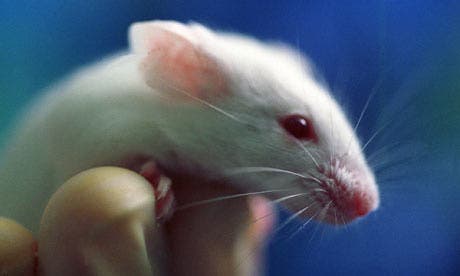
The popular myth of the fountain of youth tells the story of a magical spring that restores youth to anyone who drinks from it. Scientists working with longevity research have made important strides forward in recent years, however all of these efforts concentrate on prolonging life and slowing the effects old age has on the body, not reversing them. A breakthrough by researchers at University of Edinburgh may cause a paradigm shift in regenerative medicine after an old organ in elderly mice was regenerated into a youthful state, simply by manipulating a single gene.
The thymus is a specialized organ in the immune system. The functions of the thymus are the “schooling” of T-lymphocytes (T cells), which are critical cells of the adaptive immune system, and the production and secretion of thymosins, hormones which control T-lymphocyte activities and various other aspects of the immune system.
With old age, however, the thymus becomes progressively smaller making the body more vulnerable to infections and diseases. In fact, by the age of 70 the thymus is just a tenth of the size in adolescence. So, the team at the MRC Centre for Regenerative Medicine at the University of Edinburgh thought of a way to regenerate the thymus.
Rejuvenating elderly mice
Previous research showed that a gene, called Foxn1, naturally gets shut down as the thymus ages, so the Edinburgh researchers concentrated on boosting the gene back to youthful levels. A drug that targets this protein and instructs stem cell-like cells to rebuild the organ was made and given to elderly mice. The results were striking: just by manipulating this single gene, the thymus in elderly mice increased in size and made more T-cells. It almost completely regenerated.
“Our results suggest that targeting the same pathway in humans may improve thymus function and therefore boost immunity in elderly patients, or those with a suppressed immune system. However, before we test this in humans we need to carry out more work to make sure the process can be tightly controlled,” said Clare Blackburn, Professor of Tissue Stem Cell Biology, MRC Centre for Regenerative Medicine.
It’s not clear why the thymus shrinks with age, but one theory says it’s because more energy is diverted towards reproduction once entering adolescence. As such, if human trials are to begin, there needs to be a tightly controlled setting to ensure no negative side-effects are encountered. The discovery could also offer hope to patients with DiGeorge syndrome, a genetic condition that causes the thymus to not develop properly.
“One of the key goals in regenerative medicine is harnessing the body’s own repair mechanisms and manipulating these in a controlled way to treat disease. This interesting study suggests that organ regeneration in a mammal can be directed by manipulation of a single protein, which is likely to have broad implications for other areas of regenerative biology,” said Dr Rob Buckle, Head of Regenerative Medicine, Medical Research Council.
But what about other organs? The heart, lungs, liver, maybe there’s a way to regenerate these by gene manipulation as easily as it was for the thymus. The full paper can be read here.
Also worth noting is a different path that leads to the same destination – reactivating the enzyme telomerase, which repairs damaged tissue and reverses signs of aging, as shown by studies on mice at the Dana-Farber Cancer Institute, Harvard Medical School. A synergy between the two methods may propel medicine into a new age.






